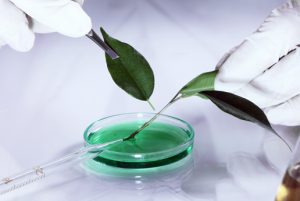NANOTECHNOLOGY: A New opportunity in Plant Sciences
The field of nanotechnology has great potential within plant sciences and plant production systems.
The agronomic application of nanotechnology has thus far received comparatively little interest relative to the application within human systems.
We review the potential applications and future opportunities of nanotechnology in plant sciences, thereby assisting in bridging the divide between human and agricultural nanotechnology.
The application of nanotechnology in plant sciences will benefit from the development of improved analytical techniques that enable the in situ analysis of NPs in planta with a low detection limit and high lateral resolution.
Regardless of the benefits of nanotechnology for plant sciences, the principle of ‘safety-by-design’ must be heeded to address community concerns about the potential adverse effects of novel engineered nanoparticles (ENPs) on ecological systems.
The agronomic application of nanotechnology in plants (phytonanotechnology) has the potential to alter conventional plant production systems, allowing for the controlled release of agrochemicals (e.g., fertilizers, pesticides, and herbicides) and target-specific delivery of biomolecules (e.g., nucleotides, proteins, and activators). An improved understanding of the interactions between nanoparticles (NPs) and plant responses, including their uptake, localization, and activity, could revolutionize crop production through increased disease resistance, nutrient utilization, and crop yield. Herewith, we review potential applications of phytonanotechnology and the key processes involved in the delivery of NPs to plants. To ensure both the safe use and social acceptance of phytonanotechnology, the adverse effects, including the risks associated with the transfer of NPs through the food chain, are discussed.

Source: Wang, Peng, et al. “Nanotechnology: a new opportunity in plant sciences.” Trends in plant science 21.8 (2016): 699-712.